Is Your Trailer Right for Your Boat?
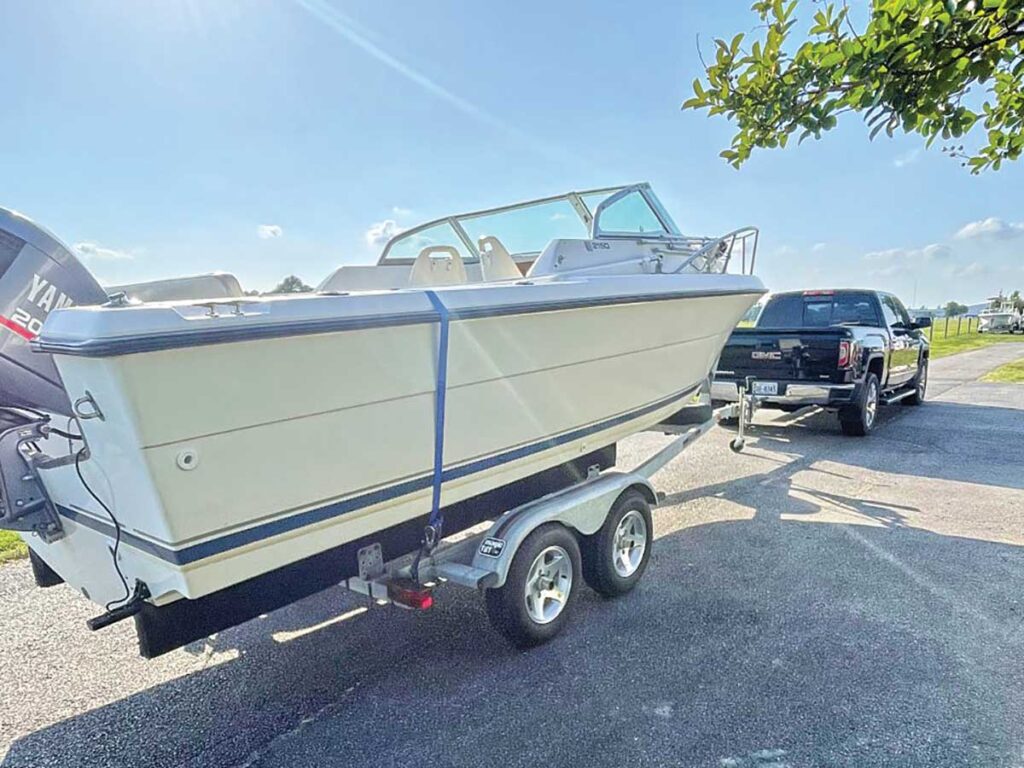 The old trailer frame stops well before the end of the boat hull.
John Tiger
The old trailer frame stops well before the end of the boat hull.
John Tiger
Because many boats spend most of their lives on their trailers, it’s important for safety reasons and for the life of the hull that the trailer matches the boat. But how can a boat owner ensure that the trailer they buy fits right?
Here are some of the elements you should look for in a properly fitting boat trailer and what goes into making that fit right. While you can do this task yourself, if you are not comfortable, a quality trailer dealer can do this job for you.
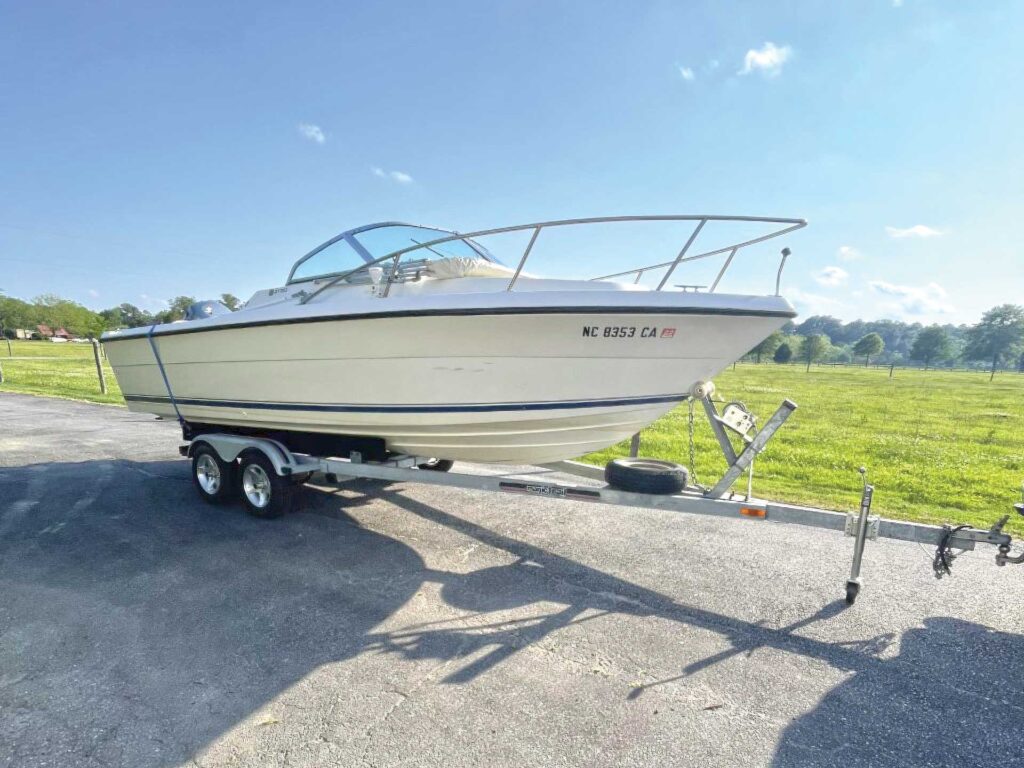 Note that the bunks are the only support for the aft 3 feet of the boat.
The old trailer had no brakes, and a very long, narrow tongue that was not very stable.
John Tiger
Note that the bunks are the only support for the aft 3 feet of the boat.
The old trailer had no brakes, and a very long, narrow tongue that was not very stable.
John Tiger
Whether buying used or new, consider the trailer and how much you may have to spend to make it right or replace it. Research boat weights, engine weights and drive weights. Determine the fuel capacity, multiplying each gallon of fuel by 7 pounds, and use this full-tank weight in your calculations. Apply “educated guesstimation” for the weights of hardtops, anchor gear, safety equipment, spares, and your normal complement of personal supplies, from fishing tackle to refreshments. Make sure the trailer is rated to handle for the sum of the above weights.
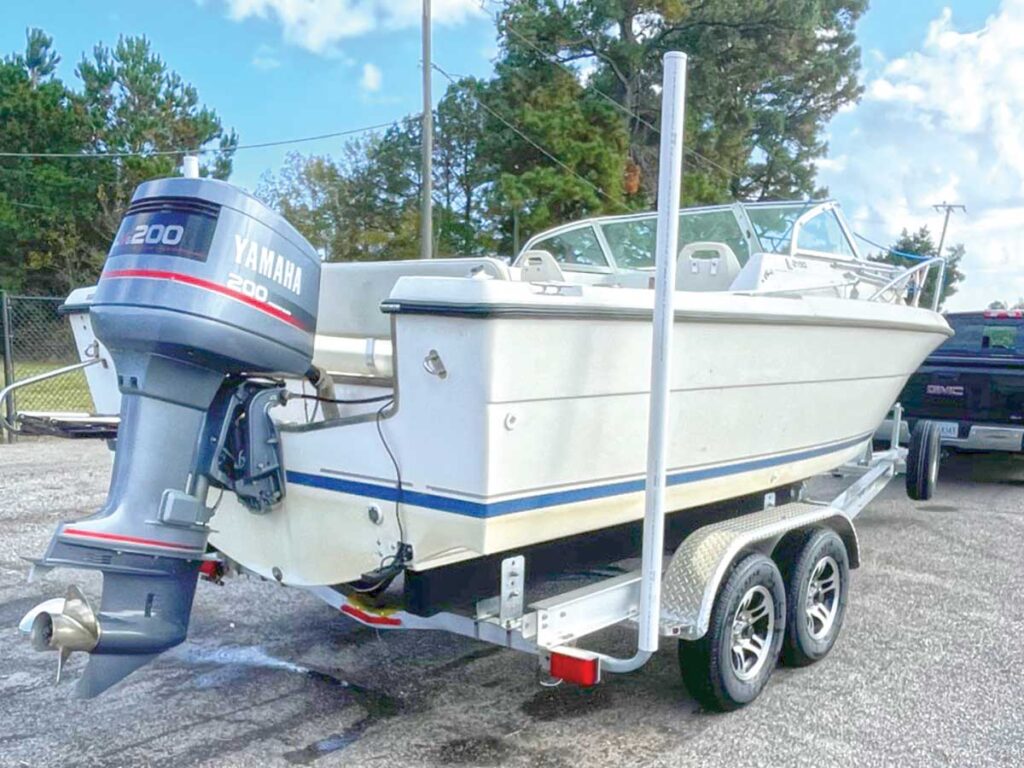 New trailer frame and bunks provide full longitudinal support as they extend all the way to the transom.
John Tiger
The Swap
New trailer frame and bunks provide full longitudinal support as they extend all the way to the transom.
John Tiger
The Swap
Once you have purchased a new trailer, the question arises as to how to get the boat fitted to it. Trailers must be adjusted to fit individual boats. Ideally, your dealer will do this for you. Lacking that, you can do it yourself with some buddy help and proper planning. You’ll need wrenches and sockets that fit the nuts and bolts on the trailer. (Hint: A 1/2-inch-drive electric-impact wrench makes short work of adjustments.) You’ll need a hammer or two to tap the bunks and supports one way or another. A couple of Sharpie markers and tape measures will help you quickly measure and mark where the bunks and supports need to move.
Measure and estimate the desired positions of the bunks before you start. As an example, I recently adjusted a trailer where it was obvious that the bunks needed to move outward on the frame by 4½ inches from where the factory set them, and the front bunks needed to be moved up higher to contact the hull. We marked all of this on the frame, and made these preliminary adjustments before leaving for the launch ramp.
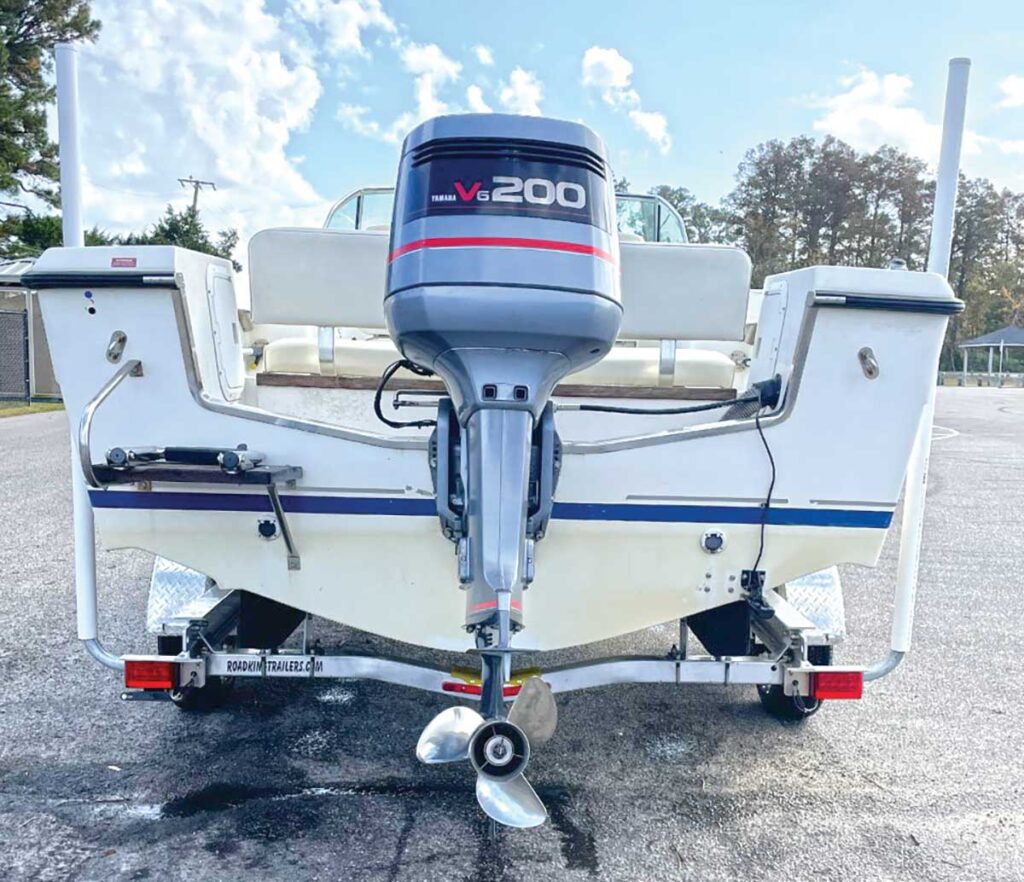 Note how bunks are adjusted to fit just inside lifting strakes. This will help in guiding the boat during loading and provide secure trailering.
John Tiger
Note how bunks are adjusted to fit just inside lifting strakes. This will help in guiding the boat during loading and provide secure trailering.
John Tiger
Next, pick a midweek day, so the ramp won’t be crowded. You’ll need two vehicles: one to tow the boat on its old trailer and the other to tow the new trailer. Make sure both vehicles are capable of towing.
After loading the boat onto the new trailer, move to the parking area and note how accurate your initial measurements and adjustments were; you’ll likely have to fine-tune to get the fit right. The bunks, or rollers, should be positioned just inside or outside the boat’s lifting strakes (for best support and easiest loading at the ramp). The bunks or rollers should fully support the hull from bow to stern—with no daylight visible between the bunks and the hull bottom.
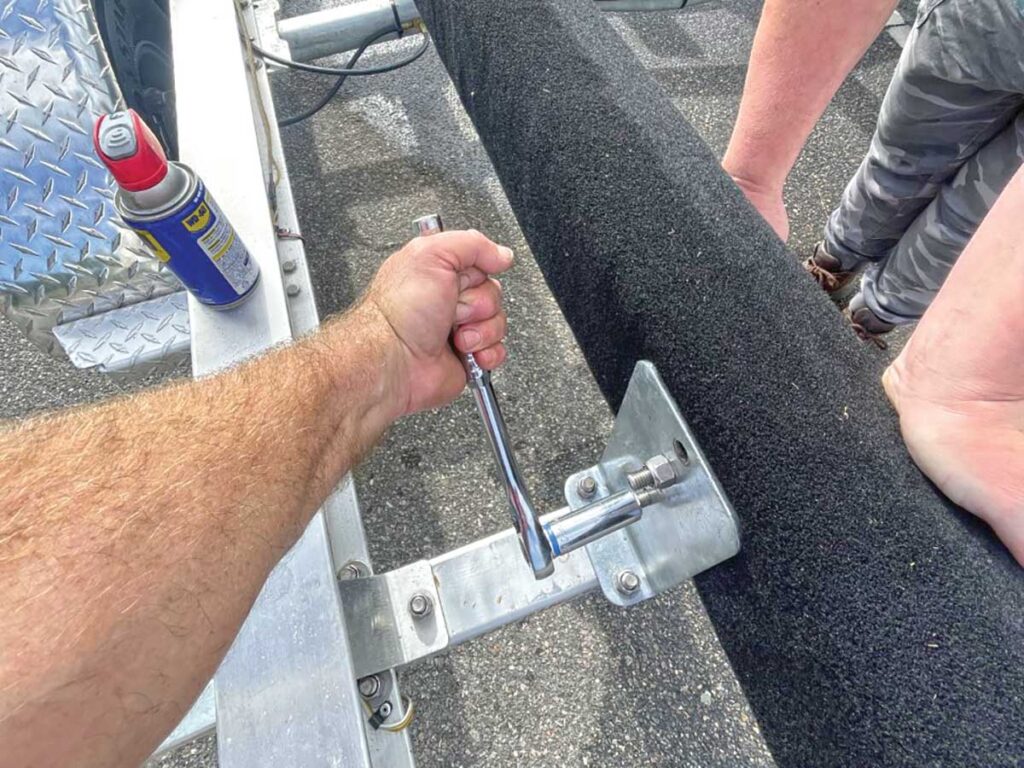 Some lubricant/penetrating oil might be necessary to loosen stubborn nuts and bolts.
John Tiger
Some lubricant/penetrating oil might be necessary to loosen stubborn nuts and bolts.
John Tiger
For any trailer, ideally, make sure that the boat transom is flush with the last rollers or aft end of the bunks. While the rollers can be moved—and may have to be—moving the winch stand forward or aft will help determine the amount of transom overhang, if any, on the trailer. Additionally, set the bow stop/bow roller so that it rests just above the boat’s bow eye. Make sure the strap or cable pulls straight onto the winch.
Read Next: Installing a Trailer-Tire Monitoring System
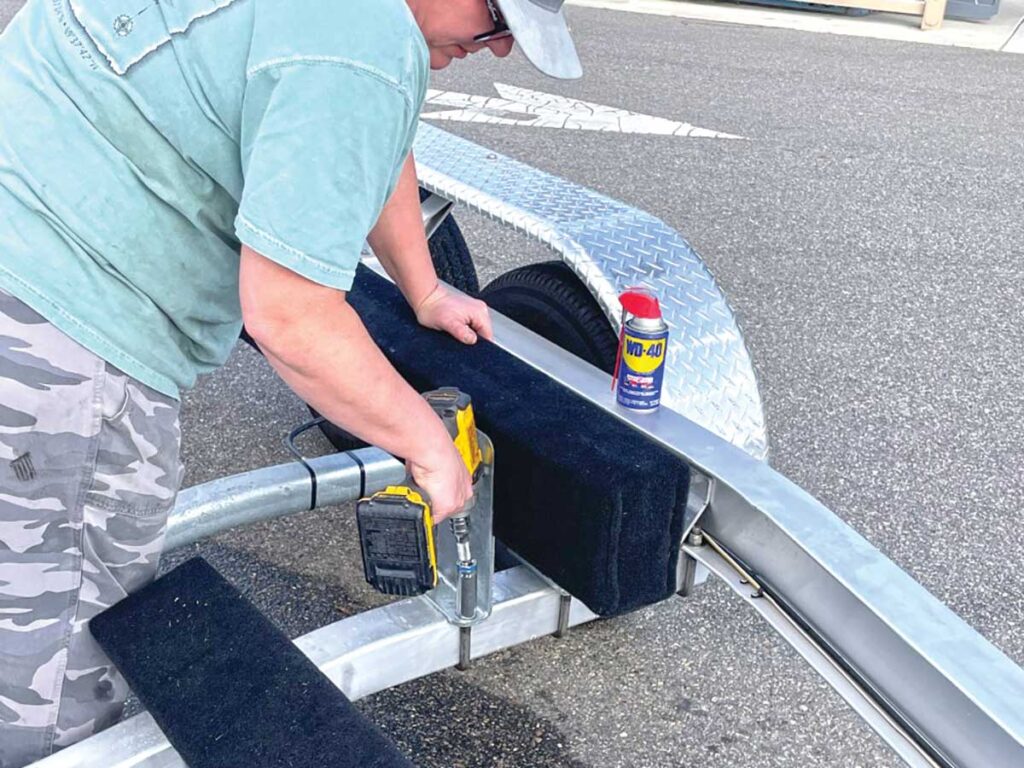 A battery-powered impact gun makes quick work of loosening and tightening bolts.
John Tiger
A battery-powered impact gun makes quick work of loosening and tightening bolts.
John Tiger
You may have to adjust the axles for tongue weight. Proper tongue weight decreases the chances of the trailer either swaying or pushing the tow vehicle. Determine ideal tongue weight by first adding the weight of the trailer itself to the weight of the loaded boat you calculated earlier. Tongue weight should be between 7 and 10 percent of that weight with a dead-weight hitch (versus a load-distributing hitch).
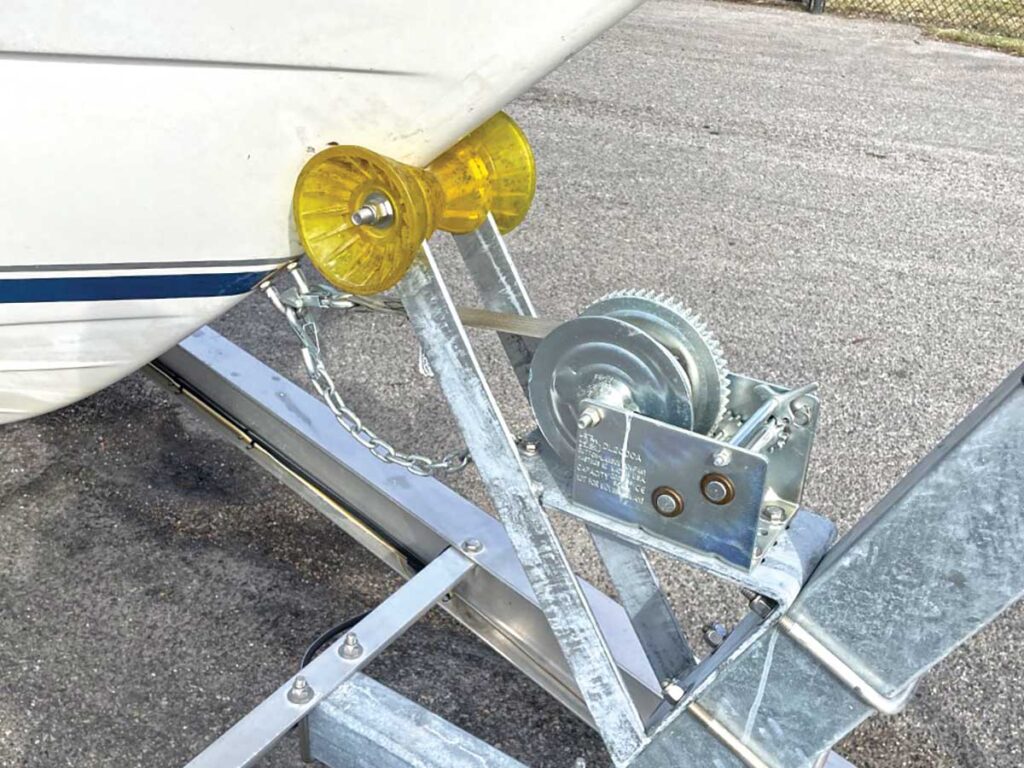 The bow stop and winch may have to be adjusted fore or aft and up or down to match the hull and bow eye. Note the bow-eye safety chain—a must-have.
John Tiger
The bow stop and winch may have to be adjusted fore or aft and up or down to match the hull and bow eye. Note the bow-eye safety chain—a must-have.
John Tiger
By using a scale at the coupler, you can observe the tongue weight. If the measured weight is over the 10 percent range, move the axle(s) forward by 1 inch for every 10 to 12 pounds you need to subtract. If the tongue weight is light, move the axle back by 1 inch for every 10 to 12 pounds you need to add. With the boat relaunched, axles can be moved by loosening the U-bolts that secure them to the frame. It’s very important to make sure the wheels remain even on each side of the trailer when you move an axle. Measure and mark the distance on each side of the trailer to make sure.
The post Is Your Trailer Right for Your Boat? appeared first on Boating Mag.
- Home
- About Us
- Write For Us / Submit Content
- Advertising And Affiliates
- Feeds And Syndication
- Contact Us
- Login
- Privacy
All Rights Reserved. Copyright , Central Coast Communications, Inc.